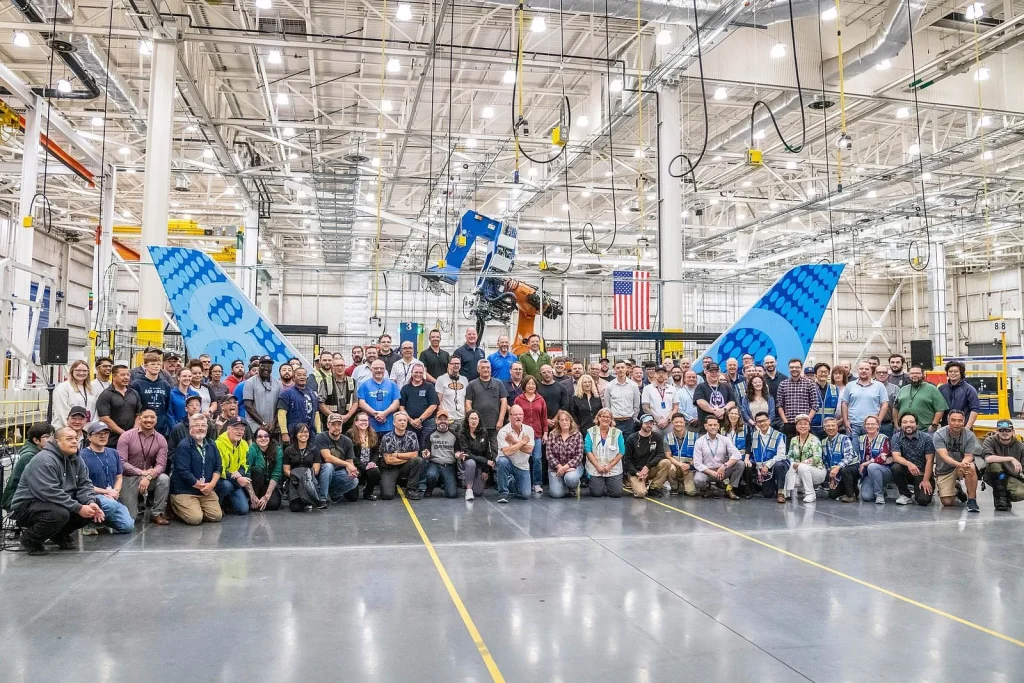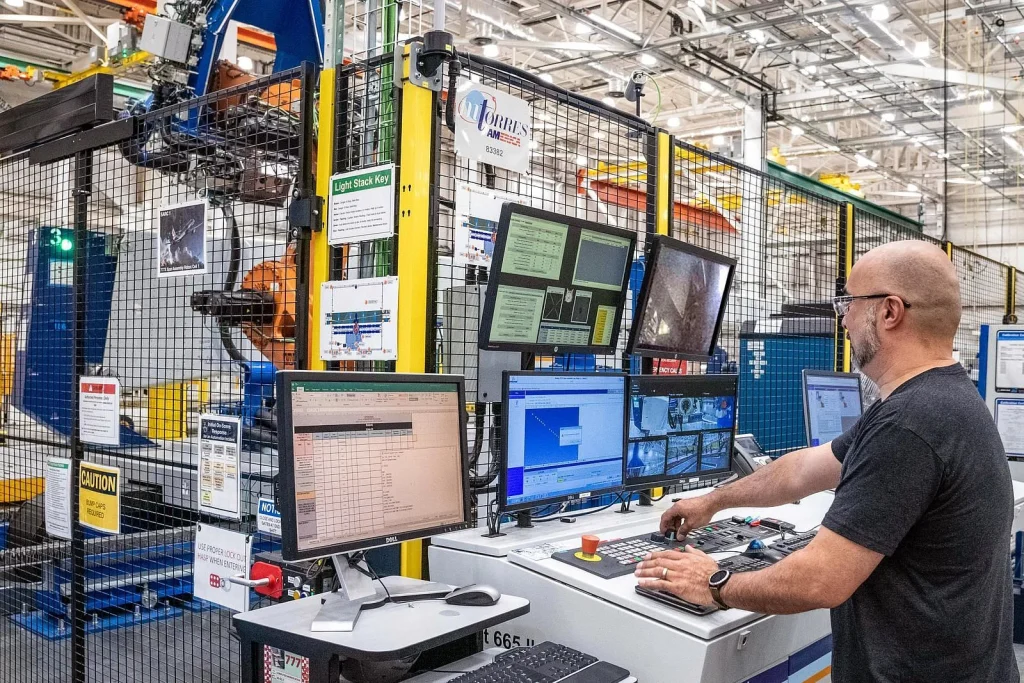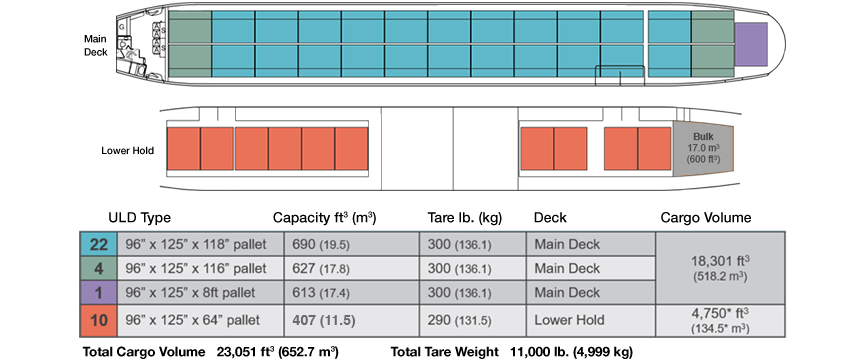EVERETT—Boeing, the aerospace juggernaut of American ingenuity, marked the start of its 777-8 Freighter production by drilling the first hole in the aircraft’s wing spar at its Everett site in Washington on Monday, July 21. Casey McDowell operated the controls that drilled the first hole into a wing spar for the first 777-8 Freighter.

“You don’t forget these moments,” McDowell said. “Having our team together as we got underway on this airplane was special.”
Boeing launched the 777-8 Freighter with a historic order of up to 50 aircraft from Qatar Airways in January 2022, marking the largest freighter commitment by value in the company’s history. Currently, the 777-8 Freighter has secured 59 firm orders from leading operators, including ANA, Cargolux, Lufthansa, Qatar Airways, and Silk Way West. Its first delivery scheduled for 2028
In recent years, Boeing has faced significant hurdles, including production slowdowns to address aircraft quality issues and a lengthy labor strike in 2024 that contributed to nearly $9.6 billion in losses to a total company reported loss of $11.83 billion that year.
However, 2025 has shown signs of progress, with Boeing achieving record January deliveries, first-quarter revenue of $19.5 billion (up 18% when compared to 2024), and a backlog growth to $545 billion (up 3% when compared to 2024), reflecting improved performance in its commercial aircraft segment. Boeing is also forecasting robust industry growth, projecting a need for nearly 2.4 million new aviation professionals by 2044 to support the expanding global commercial fleet.
Monday’s milestone aligns with Boeing’s traditional production kickoff for new models, where spar assembly serves as the foundational step. The spars, described as the “backbone of a wing” and critical support structures, are fabricated at the nearby 1.3 million-square-foot Composite Wing Center.

Each wing features two spars—front and rear—measuring 108 feet (33 meters) long, constructed from layers of carbon fiber tape totaling 392 miles (630 km) per pair. Composite fabricators apply the tape onto Automated Fiber Placement (AFP) Machines, then prep and harden the components through pressure and heat in an autoclave. Once complete, the spars are transported onsite to finish before integration at the main Everett factory.
The production for the 777X family, including the 777-8 Freighter, leverages a U-shaped moving line in the Everett factory, distinct from other programs. Wing and fuselage construction, sealing, and painting occur in dedicated areas of the facility. Some 3 million parts and 134 miles of wiring comprise the aircraft.
The 777 Freighter manufacturing journey begins with component fabrication—such as spars, skin panels, and stringers—which then advances to structural assembly in the main factory.
In the main factory, the fuselage sections are fitted with wires, insulation blankets and sidewall panels starting with Systems Installation (SI) — this is also where the flight deck is assembled, and the horizontal and vertical stabilizers are attached. Concurrently, the mid-fuselage section is joined with the wings in what is called the Wing-Body Join (WBJ) area.
Final Body Join (FBI), the critical integration of forward and aft fuselage sections with the joined wing-body assembly, is where the 777-8 Freighter comes together for the first time looking like an aircraft. In this position, the landing gear is attached, and additional systems are installed.
The aircraft then moves to Final assembly where systems such as avionics, hydraulics, and interiors are installed, tested, and then certified before moving to Paint and then the Flight Line flight tests and delivery.
Boeing won’t be America’s top exporter without its human element.
“I helped build the very first 777 – WA001 – early in my career, and it’s exciting to get to start our newest member of the 777X family,” said Robin Thoming, an automation manager with 38 years working for Boeing shared after joining approximately 100 teammates at the 777X Composite Spar Shop cheering on as the first holes were drilled.
“To touch these incredible airplanes and help bring them to life is a privilege and really a once-in-a-lifetime opportunity,” she added. “We take our work seriously as we continue to drive to build safe and more-efficient airplanes.”
The 777-8 Freighter boasts impressive performance capabilities, positioning it as the world’s largest and most capable twin-engine freighter. It offers a maximum structural payload of 118.2 tonnes (260,600 lbs.) and a maximum revenue payload of 112.3 tonnes (247,500 lbs.), with a range of 4,410 nautical miles (8,167 km) before refueling.

Compared to the 747-400 Freighter the 777 Freighter aims to replace, it boosts a 30% less fuel use and CO2 emissions, 25% better operating costs per tonne, and a 60% smaller noise footprint.
Its total cargo volume is 27,056 cubic feet (766 m³), accommodating 31 pallets on the main deck and 13 pallets plus bulk cargo in the lower hold, or 5,995 cubic feet (169.8 m³).

Powered by General Electric GE9X engines, the aircraft features a wingspan of 235 feet 5 inches (71.8 m) on the ground and a length of 232 feet 6 inches (70.86 m), with a maximum takeoff weight of 805,000 lbs.
The flight deck incorporates advanced technologies for enhanced situational awareness, efficiency, and connectivity.
Boeing’s 2025 Commercial Market Outlook projects a 67% increase in the global freighter fleet by 2044, including approximately 880 large widebody freighters such as the 777-8. Many operators will seek replacements for aging 747-400 Freighters later this decade, with the 777-8 offering near-identical payload and range but superior efficiency.
The aircraft is expected to appeal to lower-density express carriers for its volume and higher-density general market carriers for its payload, supporting the growing air cargo sector amid demand for high-value, time-critical goods like vaccines, electronics, and fresh food.
The 777-8 Freighter primary non-Boeing competitor is the Airbus A350F, a freighter variant derived from the A350 passenger jet, which Airbus is positioning as a direct rival in the large twin-engine cargo market.

Author: Mario Lotmore









